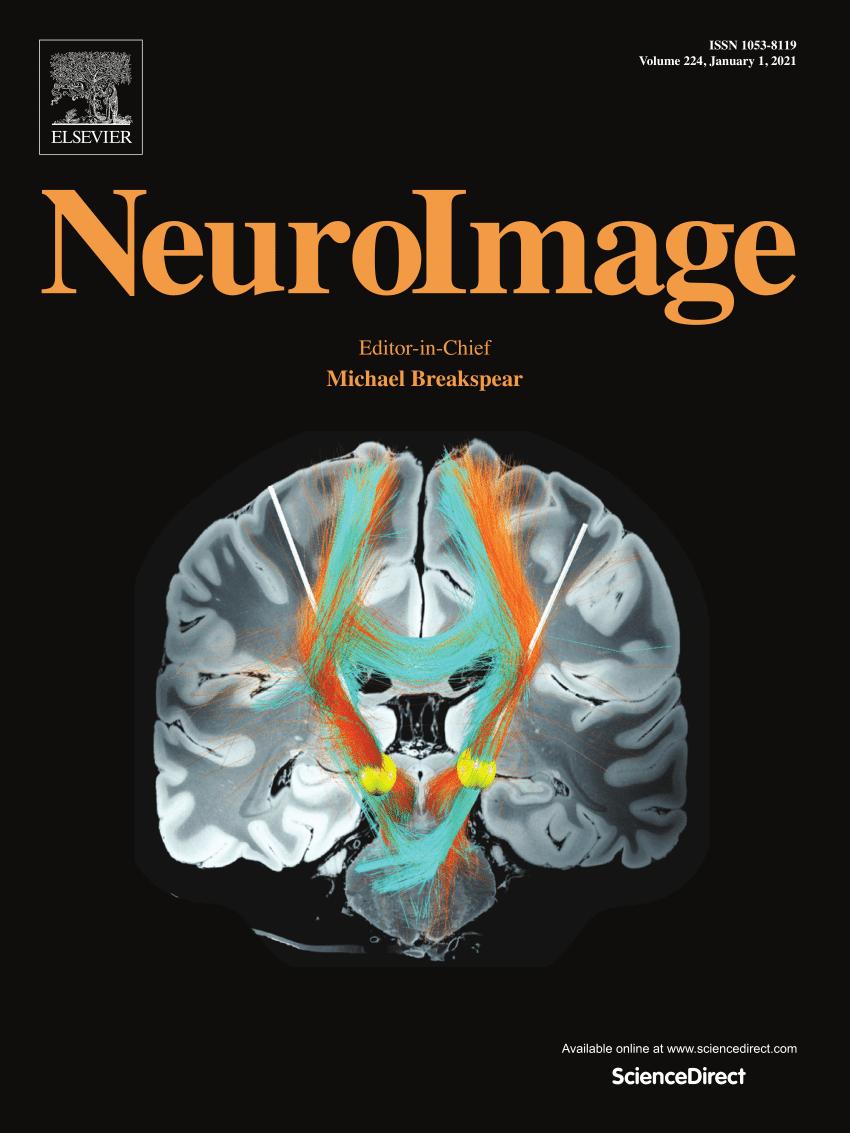HPC-DMN integration at neural event boundary affects across-boundary BOLD representations and memory recollection
IF 4.5
2区 医学
Q1 NEUROIMAGING
引用次数: 0
Abstract
Humans naturally divide their continuous experiences into discrete events, with event boundaries playing a critical role in this segmentation process. These boundaries are marked by significant shifts in brain activity, particularly in the hippocampal complex (HPC) and default mode network (DMN), which are key to learning and memory formation. We hypothesized that neural event boundaries in specific HPC-DMN regions contribute to episode recollection through across-boundary BOLD pattern shifts and neural event network formation, which may be influenced by two factors: network integration and boundary alignment. To test this, we used the widely recognized Sherlock fMRI dataset, which involves 22 human participants (17 subjects were used in this study). One key finding was that across-boundary BOLD pattern dissimilarity in the inferior parietal lobule (IPL) was greater for successfully recalled events compared to unsuccessful ones, specifically at boundaries with a high participation coefficient (indicative of high integration) or those aligned with the anterior superior temporal gyrus (aSTG) or the ventrolateral prefrontal cortex (vlPFC). Moreover, the entorhinal cortex played a crucial role in linking events into a network to facilitate subsequent recollection, particularly at boundaries with low participation coefficients or those aligned with the parahippocampus (PHC). These findings highlight the vital role of neural event boundaries in aiding comprehension and memory in naturalistic contexts through interactions with other brain regions.
神经事件边界的HPC-DMN整合影响跨边界BOLD表征和记忆回忆。
人类自然地将连续的经验划分为离散的事件,事件边界在分割过程中起着至关重要的作用。这些界限的标志是大脑活动的显著变化,特别是海马复合体(HPC)和默认模式网络(DMN),它们是学习和记忆形成的关键。我们假设特定HPC-DMN区域的神经事件边界通过跨边界的BOLD模式转移和神经事件网络的形成来促进事件回忆,这可能受到网络整合和边界对齐两个因素的影响。为了验证这一点,我们使用了广泛认可的Sherlock fMRI数据集,该数据集涉及22名人类参与者(本研究使用了17名受试者)。一个关键的发现是,在成功回忆的事件中,下顶叶(IPL)的跨边界BOLD模式差异比不成功的事件更大,特别是在高参与系数(表明高整合)或与颞前上回(aSTG)或腹外侧前额叶皮层(vlPFC)对齐的边界。此外,内嗅皮层在将事件连接到一个网络中以促进随后的回忆方面发挥了至关重要的作用,特别是在低参与系数的边界或与副海马体(PHC)对齐的边界。这些发现强调了神经事件边界通过与其他大脑区域的相互作用,在自然环境中帮助理解和记忆的重要作用。
本文章由计算机程序翻译,如有差异,请以英文原文为准。
求助全文
约1分钟内获得全文
求助全文
来源期刊

NeuroImage
医学-核医学
CiteScore
11.30
自引率
10.50%
发文量
809
审稿时长
63 days
期刊介绍:
NeuroImage, a Journal of Brain Function provides a vehicle for communicating important advances in acquiring, analyzing, and modelling neuroimaging data and in applying these techniques to the study of structure-function and brain-behavior relationships. Though the emphasis is on the macroscopic level of human brain organization, meso-and microscopic neuroimaging across all species will be considered if informative for understanding the aforementioned relationships.
 求助内容:
求助内容: 应助结果提醒方式:
应助结果提醒方式:


